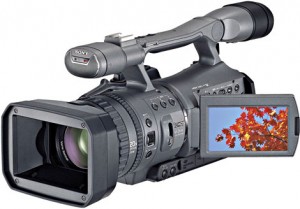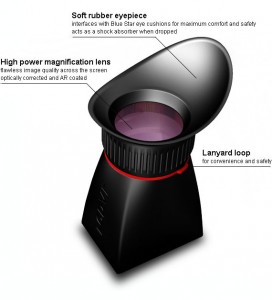I decided to get into the world of DSLR-video earlier this year. I had already done some documentary work with a Sony HDV camera, the HDR-FX7, but found that I wanted more control over depth of field and look than the prosumer type camcorder gave. I read up on the Canon 5D and 7D, and saw some clips and examples of what people did with these cameras. I quickly came to appreciate Philip Bloom´s blog, as he really started pushing the envelope on what these cameras could achieve in HD-video. I enjoyed reading about his experiences at the Skywalker Rach, when Lucasfilm flew him over to California in the autumn of 2009, to demonstrate the scope and abilities of these cameras.
I picked up the 7D later that winter. I decided to go for the 7D rather than the 5D mainly because of the price tag. The 5D was out of both my employers and my own price range, but researching the 7D online, I found that it would be more than good enough for my requirements. I worked on a short documentary back then, and was eager to see if I could put the 7D to work right away.
I decided to not use the 7D for that project. The reason was, I didn´t quite have the time to get to know the camera and get comfortable with it, before shooting began. So I decided to use our Sony HDR-FX7 once again. Not an amazing camera, by any means. But I´m quite content with its HD performance, and by now I´m so familiar with the camera that working with it feels easy. Most of the shooting was interviews, and to get a loose and easy feel I shot a lot of the interviews handheld. I used a Røde Stereomic, which gave me a good soundtrack. Had the budget been larger, I would have mic’ed the interview better. But to stay on budget I had to do both sound and camera myself, and so I opted for the easiest solution.
Now that I´m more familiar with the 7D – would I have used it for interviews at this point? Well, yes and no. I would have preferred to have two cameras covering the interview. One HDV-cam doing master shots, and the 7D for closeups and cutaways. That being said, it´s definitely possible to use HDSLRs for interviews. You just have to be a little more prepared than usual. Here are some key points:
- remember the 12 minute limit. Start and stop recording to start a new file on the CF-card
- have enough CF-cards
- backup batteries
- be very conscious about choosing your lens, and lighting your subject. Don´t go overboard with a shallow depth of field just because you can. With an f-stop of at least 5.6 you´ll be safe.
- You definitely need to record sound separately. The Canon DSLRs just aren´t good enough soundwise for professional use. I use a Røde videomic that I plug into my 7D, but that really isn´t enough for interviews.
- Finally, invest in a LCD viewfinder if that´s within your budget. This really helps your focusing, as well as giving you the stability to go handheld once in a while. I use the moderately priced LCDVF, while most people seem to prefer the pricier Zacuto Z-Finder.


